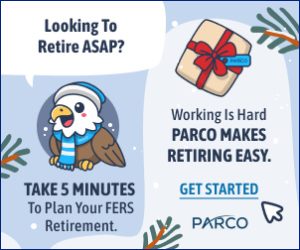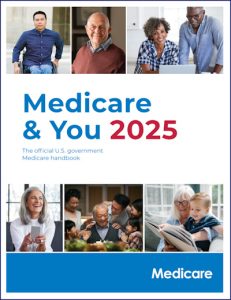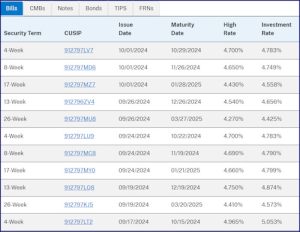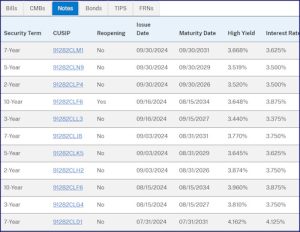Posted on Friday, 8th November 2024 by Dennis Damp
 Print This Post
Print This Post
Please forward this article to others who can use this “Open Season” information.
Open season starts on the 11th of November, this coming Monday. Tools are available to evaluate provider options, select your 2025 plan, and submit changes to OPM. Use this guide to walk you through the process and follow the links for additional clarifications and guidance.
Many plans now offer Medicare Advantage Plans or Medicare Prescription Drug Plans (MPDP). Review our Medicare Advantage Plan Primer to better understand this option and learn about potential coverage concerns.
Click on this banner to sign up for a complimentary retirement planning
session and a FREE retirement planning report
Postal Service Health Benefits (PSHB) Automatic Enrollment
Postal employees and annuitants will receive a letter before the 2024 Open Season that provides information on the PSHB plan they’ll be automatically enrolled in. You can change that plan enrollment or select a different plan during the Transitional PSHB Open Season, which runs simultaneously with the 2024 Federal Benefits Open Season.
For example, if enrolled in the FEHB Blue Cross and Blue Shield (BCBS) Basic Self Plus One Plan (113), you will automatically be enrolled in the new PSHB 33C BCBS Self Plus One Plan.
Those currently enrolled in any FEHB plan not listed in the cross-reference chart will be automatically enrolled in the PSHB nationwide plan option. For the 2025 PSHB benefit year, this plan is the Blue Cross Blue Shield Service Benefit Plan FEP Blue Focus (35A/35B/35C).
Obtain Copies of Plan FEHB & PSHB Guides
Active Employees
- Request hard copies of desired plan brochures through your benefits coordinator. If you don’t know who that is, ask your supervisor.
- Download plan brochures from the OPM website.
- Request copies directly from plan providers. I typically request and receive brochures directly from GEHA and Blue Cross Blue Shield weeks before they are available on the OPM site.
Annuitants (FEHB Retirees)
- Sign up for FEHB Open Season Online – This site is devoted to federal annuitants. Request plan brochures to be mailed to your home address, or you can download brochures to your computer. You must register to use this site, and annuitants can change enrollments online.
- Download plan brochures from the OPM website.
- Request copies directly from plan providers.
PSHB (Employees & Annuitants)
- Follow the guidance in the Open Season letter OPM sends out.
- Visit the PSHB Open Season
- Request brochures from providers of interest.
Determine Plan Costs – 2025 FEHB & PSHB Plan Rates (All rates are posted online).
Comparing Plans
Use OPM’s Health Care Comparison Tool and Consumers’ Checkbook 2025 Guide to FEHB Health Plans to find the best plan for your needs.
Checkbook’s Guide helps active and retired federal employees find a FEHB plan that meets their needs at a cost they can afford. Answering a few questions provides a personalized cost estimate for each plan, including the premium plus expected out-of-pocket costs.
For retirees, this guide provides a yearly cost estimate for every plan with Medicare Part A only and a separate estimate with Medicare Parts A, and B. Users can see how each plan coordinates with Medicare, the cost reduction of adding Medicare Part B, and whether the plan offers Medicare Part B premium rebates. They also reviewed FEHB Medicare Advantage plan options, which can be less expensive for many retirees.
Pre-order Checkbook’s 2025 Guide to Healthcare Plans for Federal Employees and save 20% by entering promo code FEDRETIRE at checkout. Their Guide and OPM’s comparison tool will be available on the first day of the open season. Before you order, check here to see if your agency provides free access.
The Postal Service is providing Consumers’ Checkbook Comparison Tools at no cost for the new PSHB offerings:
- Active USPS employees should go to usps.govto find the comparison tool.
- Retired USPS employees can use KeepingPosted to find the comparison tool.
Use these excellent tools to drill down to and find the plan best suited for your situation. Review individual FEHB & PSHB brochures; they provide the plan’s official benefits statement.
Changing Enrollment
Annuitants (Retirees)
- FEHB annuitants can change plans online at FEHB Open Season Online. The online service is easy to use, and you can track your submissions for changes.
- PSHB annuitants can change plans online at the PSHB Open Season Online site.
- Call Open Season Express at 1-800-332-9798.
- Send FEHB changes through regular mail (Postmarked no later than the final date of Open Season) to:
Office of Personnel Management
Open Season Processing Center
P.O. Box 5000
Lawrence, KS 66046-0500
When sending requests by mail, clearly state your Open Season request. If you are making an enrollment change, tell OPM the plan you want, the type of coverage (Self Only, Self Plus One, or Family), and the enrollment code. You must include your annuity claim number and social security number on your request. If you choose Self Plus One or Family coverage, OPM will need your dependent and other insurance information.
Federal Employees
- Enroll online using Employee Express.
- Department of Defense employees can enroll using the DoD automated enrollment systems.
- Health and Human Services and Department of Veterans Affairs employees can enroll using MyPay.
- Department of Energy employees can enroll using the DOE automated systems.
- You can submit Standard Form 2809, Employee Health Benefits Election Form (PDF file) [849 KB], to your Human Resources Office. (Unless you are a U.S. Postal Service employee)
- Postal Service employees can access the new Postal Service Health Benefits (PSHB) Program enrollees center this Open Season
- Tribal Employees Open Season
- Uniformed Services Open Season
Postal employees
Sign in to your online account at the Lite Blue USPS employee portal to manage your benefits.
Federal employees retiring soon and recent retirees with security clearances
can search thousands of high-paying defense and government contractor jobs.
Federal Employees Dental and Vision Insurance Program (FEDVIP)
Dental and vision benefits are available to eligible Federal and Postal employees, retirees, and their eligible family members on an enrollee-pay-all basis. Enrollment occurs during the annual Federal Benefits Open Season in November and December. New and newly eligible employees can enroll within 60 days after they become eligible.
Please register online at www.BENEFEDS.com to review and download plan brochures, use their plan comparison tool, and initiate a change or cancel enrollment. If you aren’t a registered user, sign up now. You can review your Dental, Vision, Long Term Care, and Flexible Spending accounts. Enrollees can initiate changes during the open season, when a life event changes, or cancel coverage at any time.
For enrollment/premium questions regarding dental and vision insurance, contact BENEFEDS at 1(877) 888-3337.
Medicare Impact on FEHB Plans
Review the following articles that describe the impact Medicare has on your FEHB provider payments.
- A Marriage of Convenience – Medicare & FEHB
- Medicare Advantage Plans (Heads Up for the Upcoming Open Season)
- Medicare PSHB Medicare Part B Requirements
- Medicare and FEHB Options – What Will You Do When You Turn 65?
- What to Consider Before Enrolling in Medicare B
- Medicare Part B and FEHB Update
- How to Delay Part B Premiums
Summary
With the costs of most things, from my perspective, rising considerably faster than inflation, it’s imperative to seek ways to save in this economy. Fortunately, there are lower-cost FEHB and PSHB options to consider that offer excellent coverage.
The task can be daunting for most because of the mountain of information that must be evaluated to make that decision. Thankfully, there are exceptional comparison tools to help us through the process.
This open season is different from previous years due to the establishment of the PSHB program for postal service workers and annuitants. This guide incorporated this new program with links to supporting articles that explain the plan.
Today, there are many choices to consider for everything today. Recently, during a trip to Walmart, I was looking for shampoo; many brands are vying for our attention, offering shampoo with or without conditioner, for thin, dry, or damaged hair, numerous scents – too many to mention, and with thickening or moisturizing effects. What do you choose?
These options drive me and my wife crazy, scrutinizing everything available! In my youth, my mother would buy Prell shampoo without all the fluff they offer today.
Even though we have many options for our healthcare needs, we must take the time this open season to select the best healthcare plan for our family, including prescription drug coverage.
Helpful Retirement Planning Tools
- Financial Planning Guide for Federal Employees and Annuitants
- Complimentary Retirement Planning Session
- How to Avoid Retirement Processing Delays (UPDATE)
- Hiring a Financial Planner
- TSP Guide
- Budget Work Sheet
- 2024 Pay Tables
- 2025 Federal Employees Leave Record
- Retirement Planning for Federal Employees & Annuitants
- The Ultimate Retirement Planning Guide – Start Now
- Deciding When To Retire – A 7-Step Guide
- Medicare Guide
- Social Security Guide
Disclaimer: The information provided may not cover all aspect of unique or special circumstances, federal regulations, medical procedures, investment, and benefit information are subject to change. To ensure the accuracy of this information, contact relevant parties for assistance including OPM’s retirement center.
Over time, various dynamic economic factors relied upon as a basis for this article may change. The information contained herein should not be considered investment advice and may not be suitable for your situation. This service is not affiliated with OPM or any federal entity. You should consult with a financial, medical or human resource professional where appropriate. Neither the publisher or author shall be liable for any loss or any other commercial damages, including but not limited to special, incidental, consequential, or other damages.

Tags: Federal Healthcare Benefits, FEHB, FEHB & PSHB Plan Selection Guide, FEHB Open Season, FEHB Plan Selection Guide, Postal Employee Healthcare Benefits, PSHB, PSHB Open Season, PSHB Plan Selection Guide
Posted in BENEFITS / INSURANCE, ESTATE PLANNING, FINANCE / TIP, RETIREMENT CONCERNS, SOCIAL SECURITY / MEDICARE, SURVIVOR INFORMATION, WELLNESS / HEALTH
Comments (0)|  Print This Post
Print This Post














